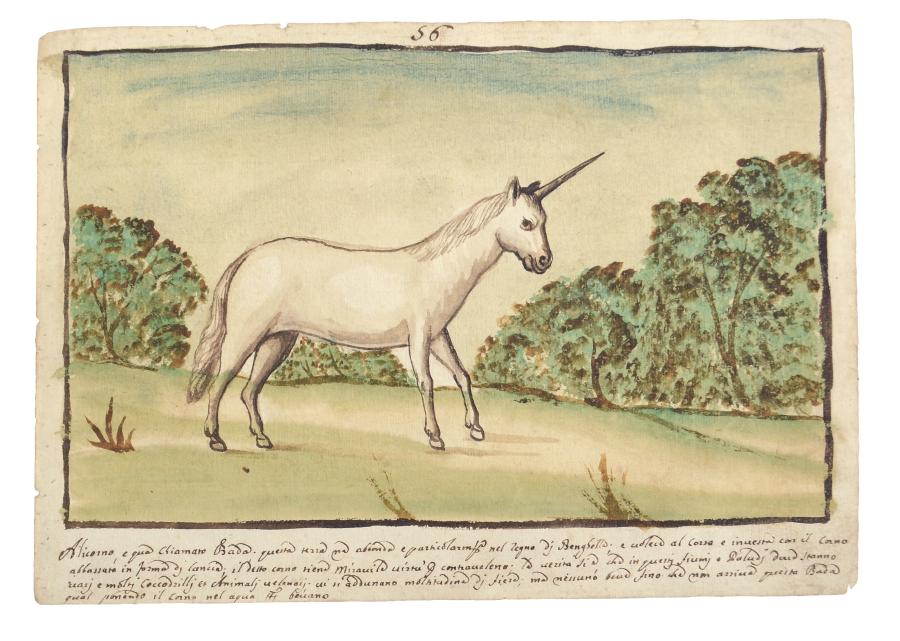PW056: Alicorno [unicorn] here called Bada
Alicorno, e qua chiamato Bada;1 questa terra ne abbonda e particolarmente nel regno di Benghella; e veloce al corso e investa con il corno abbassato in forma di lancia; il detto corno tiene miravil virtù p[er] contraveleno; la verita si e che in questi fuimi o Paludi dove stanno vari e molti coccodrilli et Animali velenosi; vi si addunano moltitudine di fiere; ma nissunò beve fino che non arriva questa Bada qual ponendo il corno nel aqua t[u]tti bevano2
[verso in Portuguese] Abada
Unicorn, and here called Bada. There are many in the region and in particular in the kingdom of Benguella; it runs fast and charges with the horn lowered as a lance; the said horn has marvelous virtue as antidote; the truth is that in these rivers and swamps where there are many and various crocodiles and poisonous Animals, there a multitude of animals gather; but no one drinks until that Bada arrives which when it puts its horn in the water, all drink.
[verso in Portuguese] Abada
- 1Bada or Abada was the name of the rhinoceros present first at the Portuguese and then at the Spanish court in the late-sixteenth century, see Annemarie Jordan Gschwend, “The Emperor’s Exotic and New World Animals: Hans Khevenhüller and Habsburg Menageries in Vienna and Prague,” in Naturalists in the Field: Collecting, Recording and Preserving the Natural World from the Fifteenth to the Twenty-First Century, ed. Arthur MacGregor (Leiden: Brill, 2018), 90-92.
- 2Cavazzi talks about them the same way but with two horns, one on the head, one on the nose. Cavazzi, Missione Evangelica, vol. B cap. 22, 618. Alicorno or bada also appear in Filippo della Santissima Trinità, Viaggi orientali, 404-05.

Add new comment